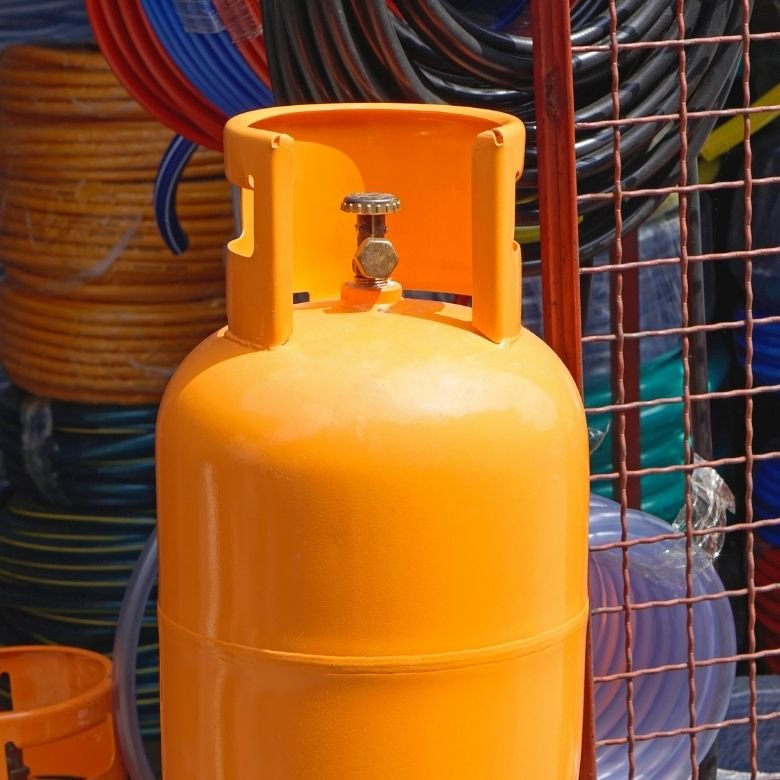The first part of a series of articles on chlorine presents the story of its discovery. We also explain how this substance is produced on an industrial scale and where and in what form it occurs in nature.

Chlorine production on an industrial scale is carried out using the electrolysis process of an aqueous solution of sodium chloride, the product of which is chlorine gas, hydrogen and caustic soda lye. Membrane technology is used to separate the products, which is currently the most modern technology for the production of chlorine and alkali in the world.
However, in order to obtain liquid chlorine, the previously obtained chlorine gas is subjected to a condensation process.
This article focusses on the primary product of the salt solution electrolysis process, i.e. chlorine gas. Let’s find out more about its properties and applications.
Properties of chlorine in cylinders, or why it has become one of the most popular chemicals
Chlorine gas is easily recognisable in its natural state. It has a yellow-green colour and is about two and a half times heavier than air. It has an intense, pungent smell and strongly oxidising properties. Chlorine is classified as one of the few elements that is gaseous at room temperature.
The European Standard EN 937: 2016 (“Chemicals used for treatment of water intended for human consumption – Chlorine”) also specifies the following properties of chlorine gas:
- Density:
- 169 kg / m3 at a pressure of 101.3 kPa (0ºC);
- 945 kg / m3 at a pressure of 101.3 kPa (20ºC);
- Specific heat capacity: 475 J / (kg.K) at 0ºC;
- Dynamic viscosity: 1,333 * 10–8 Pa.s at 20ºC.
- Dew point: -101ºC at 100kPa
It is worth noting that chlorine gas has both positive and negative features. On the one hand, it is an extremely useful substance that is applied, inter alia, in the chemical, pulp and paper and metallurgical industries. On the other hand, it is poisonous, suffocating and dangerous to living organisms. Chlorine in the form of toxic gas irritates the eyes, nose, throat and lungs. This is due to its extremely reactive nature. On the periodic table, it belongs to a group called halogens, which also includes fluorine, bromine, and iodine. All halogen elements are very reactive, which means they create a large number of chemical compounds with almost every other element on the periodic table. Chlorine can also form compounds with gold which is considered the least reactive metal. Therefore, it must be handled very carefully. People who work with chlorine must follow all safety measures. It is worth noting that a cloud of chlorine is heavier than air and descends faster. Therefore, during an alarm, in the event of a chlorine cloud forming, evacuation is directed, for example, to the top floors of the building. It is obligatory to have a gas mask in case of accidental gas leakage. In case of exposure to chlorine gas in the room, the injured person should be taken to fresh air and a doctor should be called immediately.
Chlorine is most often transported to laboratories and industrial plants in liquid form. This is due to the temperature that must be reached in order to liquefy it. It is only -34ºC. In comparison, the temperature needed to liquefy oxygen and hydrogen is -183ºC and -253ºC, respectively. On the other hand, dosing takes place with the use of appropriate dispensers under vacuum conditions. In addition, it cannot be exposed to moisture during transport and storage. This is due to a chemical reaction that occurs when it comes into contact with water. As a result, a concentrated acid is formed that could enter into reaction with the metal container.

Where is chlorine in cylinders used?
Chlorine gas has been applied in the manufacturing of many industrial and consumer products, such as cleaning and disinfecting agents, dyes, paints & varnishes and insecticides. It is also an important part of the chemical industry. It is used in chemical reactions as an oxidant or a substrate in the production of many organic and inorganic compounds, including chlorates (e.g. tetrachloromethane). It is also applied in bleaching processes in the paper and textile industries.
Another possibility of chlorine gas application is the water treatment process (drinking, cooling, swimming pool) as well as wastewater treatment. In the final stage of the water treatment process, chlorine gas reacts with water to form hypochlorous acid and hydrogen chloride which have bactericidal properties. Thanks to that, treated waters are safe for humans. Chlorine gas is fed into the water stream through suitable injection devices, usually under a vacuum. In addition, the European Standard EN 937: 2016 specifies minimum requirements for the purity of chlorine used for the treatment of water intended for human consumption. The advantages of chlorine gas are its low purchase and installation costs.
PCC Group Offer
Chlorine is an element that is widely used in industry. It is an important and often indispensable element in the production of many everyday products. Due to its high reactivity with other elements, it is also referred to as one of the most popular chemicals. The PCC Group is a significant manufacturer of chlorine not only as a raw material. It also develops new ways of using it. Its product portfolio includes both chlorine and many chlorine derivatives. Out of concern for the environment, the PCC Group has also introduced GREENLINE chlorine to its offer. One of the advantages of this series of products is the guarantee of using energy from renewable sources in the production process, which reduces the amount of carbon dioxide emitted to the environment. Chlorine can be released from pressurised containers in the form of a gas or a liquid.
Read also the first part of the article: From An Obscure Substance To A Major Disinfectant – The Story Of Chlorine
